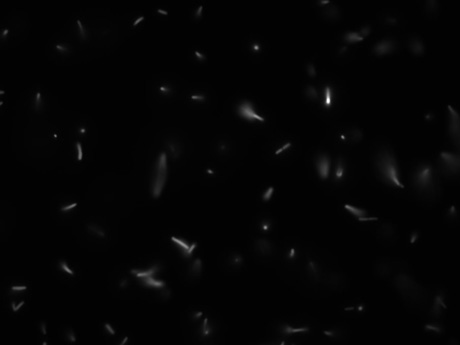The Xenotext Works
The Xenotext is my nine-year long attempt to create an example of “living poetry.” I have been striving to write a short verse about language and genetics, whereupon I use a “chemical alphabet” to translate this poem into a sequence of DNA for subsequent implantation into the genome of a bacterium (in this case, a microbe called Deinococcus radiodurans—an extremophile, capable of surviving, without mutation, in even the most hostile milieus, including the vacuum of outer space).
When translated into a gene and then integrated into the cell, my poem is going to constitute a set of instructions, all of which cause the organism to manufacture a viable, benign protein in response—a protein that, according to my original, chemical alphabet, is itself yet another text. I am, in effect, engineering a life-form so that it becomes not only a durable archive for storing a poem, but also an operant machine for writing a poem—one that can persist on the planet until the sun itself explodes….
Yesterday, I received confirmation from the laboratory at the University of Calgary that my poetic cipher, gene X-P13, has in fact caused E. coli to fluoresce red in our test-runs—meaning that, when implanted in the genome of this bacterium, my poem (which begins “any style of life/ is prim…”) does in fact cause the bacterium to write, in response, its own poem (which begins “the faery is rosy/ of glow…”). I have finally demonstrated the viability of the gene (which has taken me about a year to design).
The lab is now going to isolate the resulting protein in order to confirm that my molecule “Protein 13” has indeed folded according to my projections and simulations (but so far as we can tell, the poem is functioning without adverse effects upon the cells). I am going to be spending the next two months or so, analyzing the results, while arranging more test-runs, to confirm this initial outcome—but once done, I must then figure out how to implant X-P13 into the genome of the targeted organism, Deinococcus radiodurans—(a much tougher microbe to engineer in this manner…).
Nevertheless:
The Xenotext works!
More info here:
“Appearing at North of Invention”
Video (50:00 min.)
Christian Bök is the author of Crystallography (Coach House Press, 1994), a pataphysical encyclopedia nominated for the Gerald Lampert Memorial Award, and of Eunoia (Coach House Books, 2001), a bestselling work of experimental literature, which has gone on to win the Griffin Prize for Poetic Excellence. Bök has created artificial...


[...] xenotext: “Yesterday, I received confirmation from the laboratory at the University of Calgary that [...]